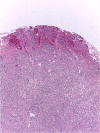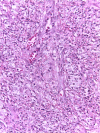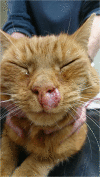Feline sporotrichosis in Asia
- PMID: 32363567
- PMCID: PMC7966660
- DOI: 10.1007/s42770-020-00274-5
Feline sporotrichosis in Asia
Abstract
Sporothrix schenckii sensu lato is currently recognized as a species complex with only Sporothrix brasiliensis, Sporothrix schenckii sensu stricto, Sporothrix globosa and Sporothrix pallida identified to cause disease in the cat. Feline sporotrichosis in Asia is mainly reported from Malaysia where a single clonal strain of clinical clade D, Sporothrix schenckii sensu stricto manifesting low susceptibility to major antifungal classes, has been identified as the agent of the disease. Sporothrix globosa has been identified to cause disease from a single cat in Japan while the specific species of agent has not been identified yet for the disease in Thailand. Despite efforts to elucidate and describe the pathogenicity of the agent and the disease it causes, the paucity of data highlights the need for further molecular epidemiological studies to characterize this fungus and the disease it causes in Asia. Its prognosis remains guarded to poor due to issues pertaining to cost, protracted treatment course, zoonotic potential and low susceptibility of some strains to antifungals.
Keywords: Asia; Feline sporotrichosis; Malaysia.
Conflict of interest statement
The authors declare that there are no conflict of interest.
Figures














Similar articles
-
Feline sporotrichosis caused by Sporothrix schenckii sensu stricto in Southern Thailand: phenotypic characterization, molecular identification, and antifungal susceptibility.Med Mycol. 2022 Sep 30;60(9):myac075. doi: 10.1093/mmy/myac075. Med Mycol. 2022. PMID: 36130102
-
Molecular typing of Sporothrix schenckii isolates from cats in Malaysia.Mycoses. 2015 Apr;58(4):220-4. doi: 10.1111/myc.12302. Epub 2015 Feb 27. Mycoses. 2015. PMID: 25727965
-
Phylogenetic analysis reveals a high prevalence of Sporothrix brasiliensis in feline sporotrichosis outbreaks.PLoS Negl Trop Dis. 2013 Jun 20;7(6):e2281. doi: 10.1371/journal.pntd.0002281. Print 2013. PLoS Negl Trop Dis. 2013. PMID: 23818999 Free PMC article.
-
Guideline for the management of feline sporotrichosis caused by Sporothrix brasiliensis and literature revision.Braz J Microbiol. 2021 Mar;52(1):107-124. doi: 10.1007/s42770-020-00365-3. Epub 2020 Sep 29. Braz J Microbiol. 2021. PMID: 32990922 Free PMC article. Review.
-
The Current Status of Feline Sporotrichosis in Malaysia.Med Mycol J. 2017;58(3):E107-E113. doi: 10.3314/mmj.17.014. Med Mycol J. 2017. PMID: 28855477 Review.
Cited by
-
Sporotrichosis in Argentina: clinical and epidemiological analysis.Biomedica. 2023 Aug 31;43(Sp. 1):109-119. doi: 10.7705/biomedica.6886. Biomedica. 2023. PMID: 37721908 Free PMC article. English, Spanish.
-
Clinical and Anatomopathological Evaluation of BALB/c Murine Models Infected with Isolates of Seven Pathogenic Sporothrix Species.Pathogens. 2021 Dec 20;10(12):1647. doi: 10.3390/pathogens10121647. Pathogens. 2021. PMID: 34959602 Free PMC article.
-
Biological and Clinical Attributes of Sporothrix globosa, a Causative Agent of Sporotrichosis.Infect Drug Resist. 2022 Apr 22;15:2067-2090. doi: 10.2147/IDR.S362099. eCollection 2022. Infect Drug Resist. 2022. PMID: 35498634 Free PMC article. Review.
-
Zoonotic feline sporotrichosis: a small case cluster in Perth, Western Australia, and a review of previous feline cases from Australia.Aust Vet J. 2024 Dec;102(12):638-645. doi: 10.1111/avj.13375. Epub 2024 Oct 20. Aust Vet J. 2024. PMID: 39428359 Free PMC article. Review.
-
Sporotrichosis Outbreak Due to Sporothrix brasiliensis in Domestic Cats in Magallanes, Chile: A One-Health-Approach Study.J Fungi (Basel). 2023 Feb 9;9(2):226. doi: 10.3390/jof9020226. J Fungi (Basel). 2023. PMID: 36836340 Free PMC article.
References
-
- Zhou X, Rodrigues A, Feng P, Hoog GS. Global ITS diversity in the Sporothrix schenckii complex. Fungal Divers. 2013;2013:1–13.
-
- Han HS, Kano R, Chen C, Noli C. Comparisons of two in vitro antifungal sensitivity tests and monitoring during therapy of Sporothrix schenckii sensu stricto in Malaysian cats. Vet Dermatol. 2017;28:156–e32. - PubMed
-
- Kano R, Tsui CKM, Hamelin RC, Anzawa K, Mochizuki T, Nishimoto K, Hiruma M, Kamata H, Hasegawa A. The MAT1-1:MAT1-2 ratio of Sporothrix globosa isolates in Japan. Mycopathologia. 2015;179:81–86. - PubMed
-
- Schubach TMP, Menezes RC, Wanke B. Sporotrichosis. In: Greene CE, editor. Infectious diseases of the dog and cat. 4. St. Louis: Saunders Elsevier; 2012. pp. 645–650.
Publication types
MeSH terms
Substances
LinkOut - more resources
Full Text Sources
Miscellaneous

